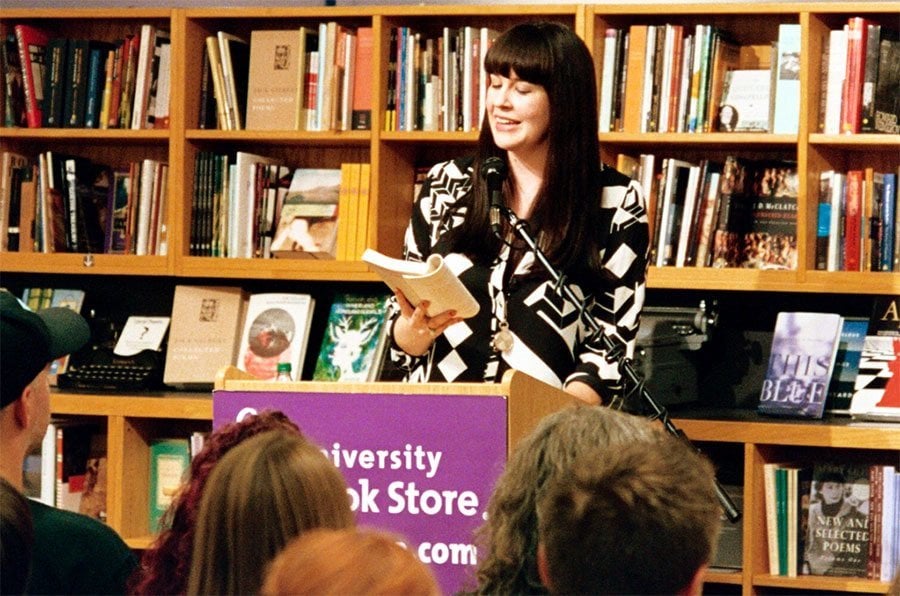Today’s death industry — and what it gets wrong

Doughty speaks to a crowd at a bookstore. Image Source: Wikipedia
From the 19th century on, caskets have become normalized as part of the United States’ funeral culture, but they can be inordinately expensive (middle of the road models will set you back around $2,000). In fact, our funerals can be seriously pricey, often somewhere in the $7,000-$10,000 range.
Cremation’s popularity, on the other hand, is more recent. In the 1960s, “[People started asking] ‘Why are we paying so much for funeral services? We should just cremate the body instead, it’s much less expensive,'” Doughty said. “But it took a while for it to catch on.” Since the latest economic recession cremation has become a more popular choice: Currently, nearly half of all deaths in the United States each year end with cremation.
Doughty, who has been in the funeral industry for the last seven years, thinks there’s definitely a correlation between economic trends and funeral preferences, but that there’s more to it than business cycles.
“[The state of the economy] explains that astronomical rise in cremation over the past 20 years or so,” Doughty said. “A big part of it is cost. Another part of it is, there are two reasons people will pay $10,000 for a funeral: one reason is that they really don’t know that there are other options. They really feel pressured into doing it because they feel like their father or mother won’t get taken care of.
“The second reason is that they actually find real meaning in the ceremonies and they find value in it, and they want to pay for it. The problem for the industry is that those reasons are increasingly less,” she added.
But Doughty, who is in favor of alternatives to the standard American funeral, adds that even as traditional funeral costs rise we are not necessarily going to see an increase in non-traditional burial practices — mainly due to our ossified cultural understanding of death.
“The history of death in America feels very short and very long at the same time,” Doughty said. “On one hand, it really has not been that long since we did death like the way we’re advocating for.”
She’s right: the start of the American Civil War was just 155 years ago — making embalming and the traditions it paved the way for younger than fire hydrants (1801), coffee makers (1806), dental floss (1815), Morse Code (1836) and breast pumps (1854).
One way Doughty thinks that our rigid understanding of death could be loosened is through a “Death 101” course, wherein students learn not just about the science of death, but how it’s viewed across cultures and time.
“I think death cultural relativism is one of the best ways to understand cultural relativism in general,” Doughty said. When you consider that death is about the only sure thing about life, regardless of where you live, she’s probably right.





